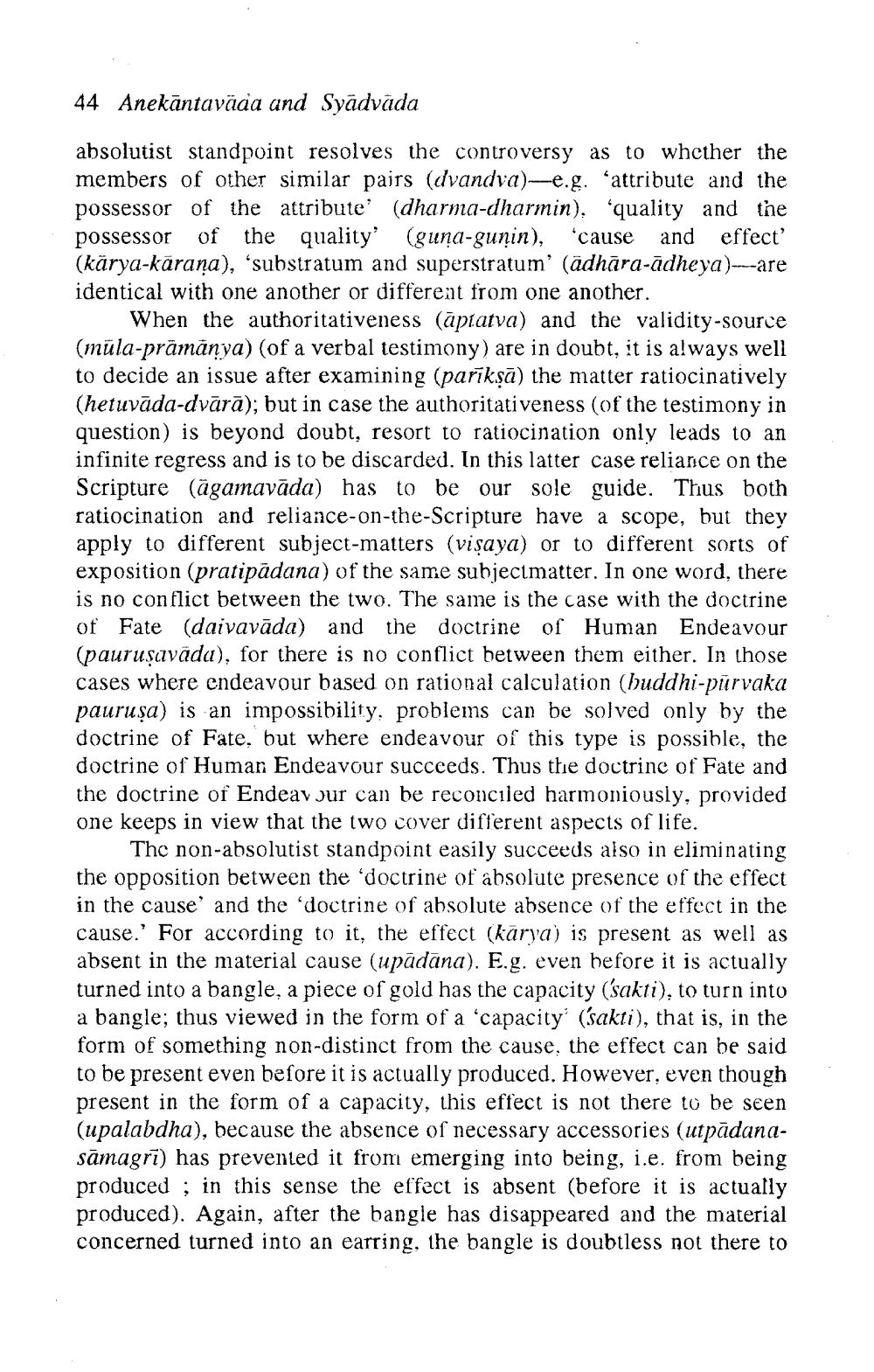________________
44 Anekāntaväga and Syadvada
absolutist standpoint resolves the controversy as to whether the members of other similar pairs (dvandva)-e.g. "attribute and the possessor of the attribute' (dharma-dharmin), 'quality and the possessor of the quality' (guna-gunin), 'cause and effect (kärya-kārana), 'substratum and superstratum' (adhāra-ādheya)--are identical with one another or different from one another.
When the authoritativeness (āptatva) and the validity-source (müla-pramanya) (of a verbal testimony) are in doubt, it is always well to decide an issue after examining (parīkşā) the matter ratiocinatively (hetuvāda-dvārā); but in case the authoritativeness (of the testimony in question) is beyond doubt, resort to ratiocination only leads to an infinite regress and is to be discarded. In this latter case reliance on the Scripture (agamavāda) has to be our sole guide. Thus both ratiocination and reliance-on-the-Scripture have a scope, but they apply to different subject-matters (vişaya) or to different sorts of exposition (pratipādana) of the same subjectmatter. In one word, there is no conflict between the two. The same is the case with the doctrine of Fate (daivavāda) and the doctrine of Human Endeavour (pauruşavāda), for there is no conflict between them either. In those cases where endeavour based on rational calculation (huddhi-purvaka pauruşa) is an impossibility, problems can be solved only by the doctrine of Fate, but where endeavour of this type is possible, the doctrine of Human Endeavour succeeds. Thus the doctrine of Fate and the doctrine of Endeavour can be reconciled harmoniously, provided one keeps in view that the two cover different aspects of life.
The non-absolutist standpoint easily succeeds also in eliminating the opposition between the doctrine of absolute presence of the effect in the cause and the 'doctrine of absolute absence of the effect in the cause. For according to it, the effect (karya) is present as well as absent in the material cause (upādana). E.g. even before it is actually turned into a bangle, a piece of gold has the capacity (sakti), to turn into a bangle; thus viewed in the form of a 'capacity' (sakti), that is, in the form of something non-distinct from the cause, the effect can be said to be present even before it is actually produced. However, even though present in the form of a capacity, this effect is not there to be seen (upalabdha), because the absence of necessary accessories (utpādana. sāmagri) has prevented it from emerging into being, i.e. from being produced ; in this sense the effect is absent (before it is actually produced). Again, after the bangle has disappeared and the material concerned turned into an earring, the bangle is doubtless not there to




